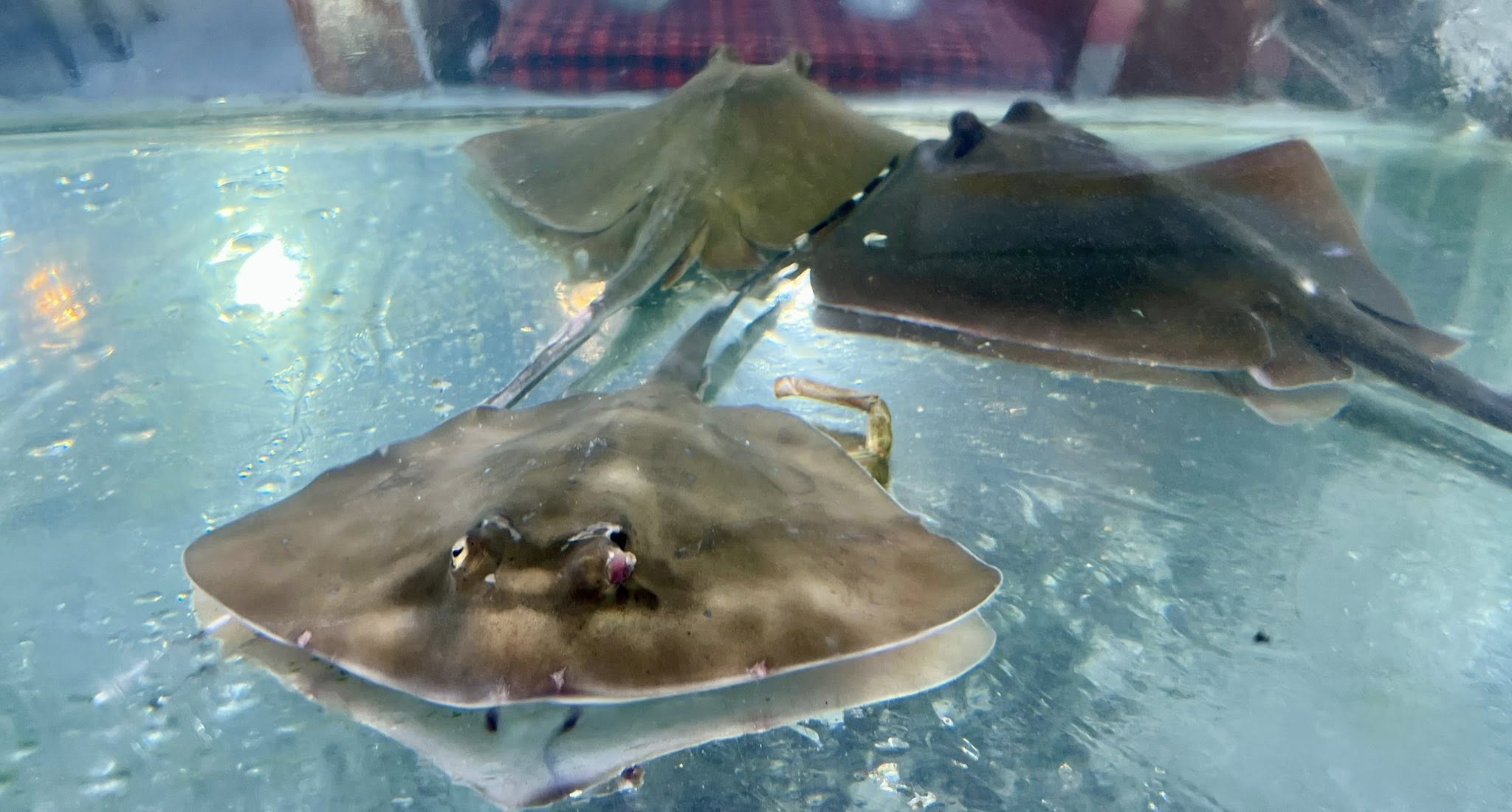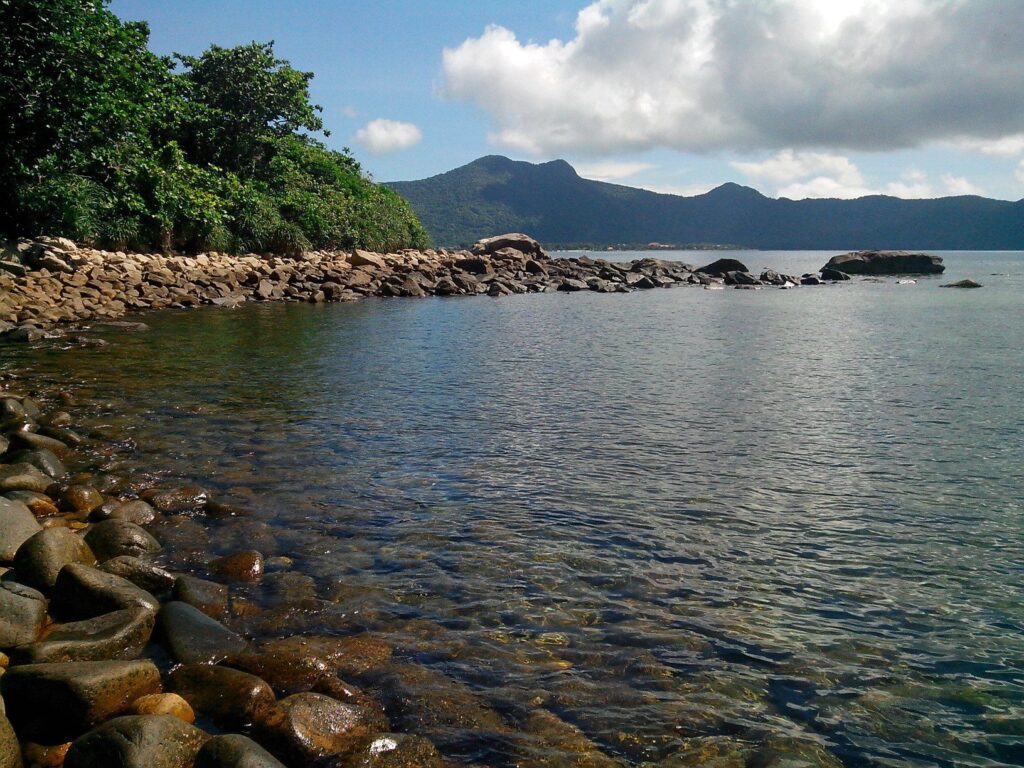Côn Đảo has been transforming from a “hell on earth” into a “tourist paradise.” In 2011, two international travel publications honored the islands: Lonely Planet listed Côn Đảo among the world’s 10 most charming islands, while Travel + Leisure ranked it as one of the 10 most mysterious islands on the planet.
Many elements contribute to Côn Đảo’s unique charm and sense of mystery, but the most essential and delightful among them is undoubtedly its food and drink.
Côn Đảo is also known as Côn Lôn, Côn Nôn, and Côn Sơn. In Côn Lôn Sử Lược (Thanh Hương Tùng Thư, Saigon, 1961), author Trần Văn Quế suggested that these place names derive from the Malay Pulau Kundur, meaning “Bottle Gourd Island,” which Europeans transcribed into Poulo Condor or Poulo Condore. In another study, The Place Name Côn Đảo published in Xưa và Nay magazine, issue 431 (July 2013), Nguyễn Thanh Lợi wrote: “In 1285, Chinese pirates occupied the Côn Lôn archipelago to build their stronghold. Seeing that every island here had mountains, they called it K’ouen louen, later transcribed as Côn Lôn.”
Mentioning Côn Đảo, many immediately think of the prison system established by Admiral of Cochinchina Louis Adolphe Bonard (1805–1867), whose name appears in Nguyễn Dynasty records as Phố Na. The prison, created by his decree dated February 1, 1862, was a “hell on earth” consisting of 20 structures later recognized as Special National Relics under Decision No. 548/QĐ-TTg on May 10, 2012.
Alongside the historic sites, visitors have long come to Côn Đảo to visit the An Sơn Shrine dedicated to Lady Phi Yến (Lê Thị Răm), the Mausoleum of Prince Cải, Vân Sơn Pagoda, and the beaches of An Hải, Lò Vôi, Đầm Trầu, Ông Đụng, and Nhất. These landmarks are located on the main island, also known as Côn Lôn or Phú Hải, now Côn Sơn Town. Tourists can also take speedboats to explore the smaller islands: Hòn Bảy Cạnh with its Hòn Chớp Lighthouse and sea turtles nesting ground; Hòn Bà with its pristine mangrove forests and Love Peak; Hòn Cau with its historic Bà Thiết Hamlet and vibrant coral reefs.
And of course, countless visitors come to Côn Đảo yearning to savor its distinctive and delicious local cuisine.
In Côn Đảo, both locals and travelers freely hunt for and enjoy fresh seafood. Breakfast on the islands—fish cake noodle soup, crab roe soup, or sea-cicada (dã tràng) noodle soup—warms the stomach before one heads out to sea for a fishing trip. Angler Đức Vân from Ho Chi Minh City shared:
“In Vietnam, many coastal areas are exhausted by bottom trawling, gillnets, and explosives, so large fish are increasingly rare. But destructive fishing is prohibited in Côn Đảo, allowing many ‘giant’ species to thrive. I once caught a 150 kg grouper here.”
In the “four pillars” of premium fish, fishermen of the Gulf of Tonkin praise chim, thu, nhụ, and đé. Meanwhile, Côn Đảo anglers revere bớp, thu, mú, and sóc.
Each fish family contains numerous species. The grouper family (Serrandinae) includes 555 species; those found in Côn Đảo waters include black grouper, green grouper, tiger grouper, blue-spotted grouper, honeycomb grouper, brown-marbled grouper, giant grouper, and more. Tasting Côn Đảo’s red grouper—grilled in foil, fried, steamed, or cooked into porridge or hotpot—reminds me of the shimmering green-spotted red groupers of Phú Quý Island in Bình Thuận Province.
The mackerel family Scombridae includes 54 species, with many varieties found in Côn Đảo: butterfly mackerel, short mackerel, striped mackerel, lam mackerel, Spanish mackerel, Pacific mackerel, and others. The island is famously known for its specialty one-sun-dried mackerel.
Côn Đảo also offers a rich array of sea snails. Experienced fishermen avoid poisonous species and harvest only safe ones such as ốc hương, bạch ngọc, gai xương rồng, ốc nhảy, ốc vú nàng, ốc hoàng hậu, ốc bù chằn, ốc nhung, ốc đỏ, and more—each transformed by local chefs into delightful dishes. From saltwater environments also come oysters, sea urchins, and other invertebrates, famously processed into aromatic seafood sauces.
Its waters teem with cephalopods: squid of all kinds—mực lá, mực ống, mực sim, mực nang, mực trứng—and countless species of octopus. Nearby are also various crabs: mud crabs, blue crabs, red crabs, three-spotted crabs, spotted flower crabs, disc crabs, green crabs, and more. These provide the ingredients for an abundance of delicious and nutritious dishes.
During a leisurely spring trip sampling Côn Đảo’s authentic Poulo Condore specialties, I noticed an amusing coincidence: many of the archipelago’s most outstanding seafood species share one defining characteristic—red coloring. Red crabs, red flower crabs, red snails, red grouper, red snapper, red squirrelfish… And the undisputed champion among them is the red spiny lobster — the iconic “super seafood” of Côn Đảo.
I have admired and tasted lobsters from Bình Ba Island and Vân Phong Bay in Khánh Hòa Province, as well as in Lăng Cô Town of Thừa Thiên–Huế Province. But here in Côn Đảo, Bà Rịa–Vũng Tàu, I was particularly delighted to lift a 1.4 kg red spiny lobster and indulge in three dishes prepared from this magnificent specimen: lobster blood pudding, garlic-fried lobster, and lobster porridge hotpot. As the chef skillfully prepared the blood pudding, he smiled:
“Thank you for honoring the red spiny lobster as Côn Đảo’s ‘super seafood.’ Not everyone who comes here gets to enjoy these dishes. The red spiny lobster is expensive, of course, but even wealthy guests cannot always have it—fishermen don’t catch them every day. And beware: many inland restaurants mislabel red swamp crayfish and red-claw crayfish as ‘Côn Đảo red lobster.’”
Scientifically known as Panulirus longipes, the true red spiny lobster lives at depths of 18–122 meters among coral reefs in clear, wave-rich tropical and subtropical waters of the Indian and Pacific Oceans. Although listed in the Red Data Book, it is legally harvested and traded in Vietnam. Meanwhile, the red-claw crayfish (Cherax quadricarinatus) and the red swamp crayfish (Procambarus clarkia) are freshwater invasive species classified under Circular 35/2018 of the Ministry of Natural Resources and Environment. Unfortunately, some inland eateries serve dishes from these freshwater species while advertising them as “Côn Đảo red lobster,” so diners should be cautious.
Indeed, Côn Đảo’s cuisine is filled with mysteries — and endless allure.








